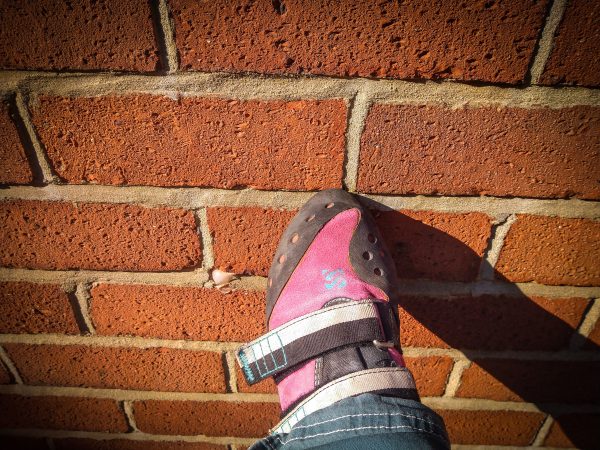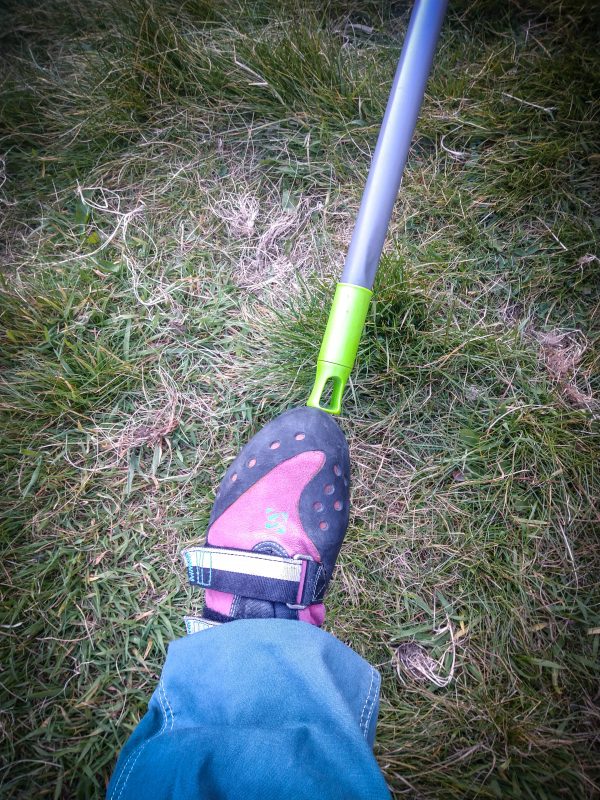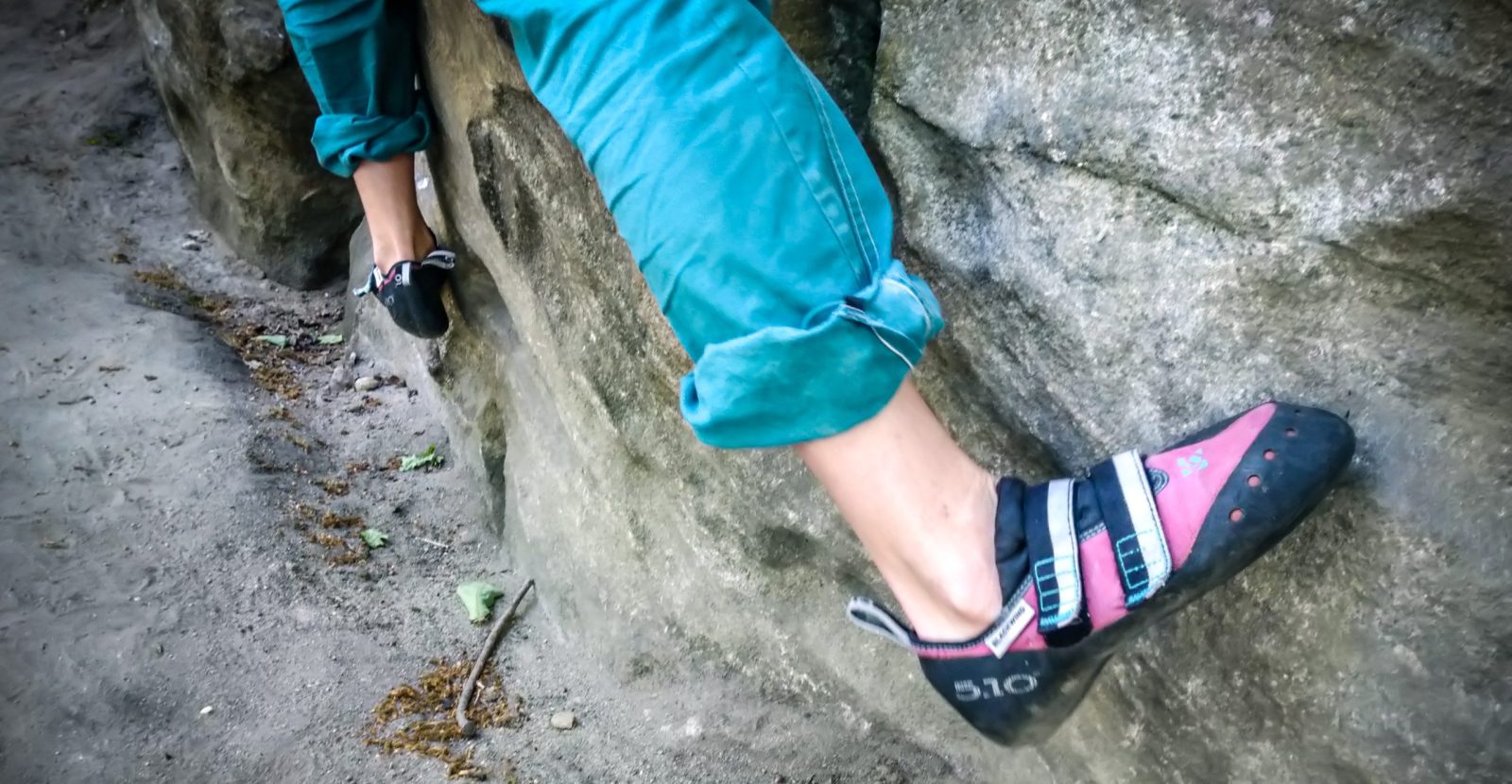There are a lot of different techniques that are useful for climbing but one the most important is footwork. The reason for this is that your legs are a lot stronger than your arms and using your feet correctly means you can push up through your legs, saving your arm strength for when you really need them. You should be using the toe section of your shoe, this is because it is easier to pivot and standing on your tip toes gives a little more reach when you really need it. The goal with footwork is to be accurate and precise, get your foot on the hold (and ideally the right part of the hold) first time. Footwork is important indoors but if you are climbing outdoors it becomes even more important as the foot holds are often a lot smaller.
Has your foot ever slipped off a small or polished foothold? Or that smear (using your foot against the wall) just not stuck? Then another thing to consider is pressure. Put your finger on a surface lightly and pull it along. Now push your finger down hard and slide it along. When you are pushing your finger down it sticks a lot better. This is what you need to think about doing when using a small or polished foot hold. Now put your full hand on the surface. This is like using a smear. You need to get as much of your shoe in contact with the surface as possible and push down through it for it to stick… the more you push into it (the more you trust it) the more it will stick.
There are a number of ways to practice footwork. Footwork drills have the added bonus that its really easy to practice at home. If you can get creative you can make it fun as well.
You can work on footwork doing something as simple as walking round your house and garden, if you have floorboards, tiles or paving slabs. When you walk around try getting your toe to hit the lines to start with. Then move to getting your toes on the part where one corner meets another. The goal is to hit the bit you are aiming for as closely as possible. When you put your foot down really focus on pushing weight through that foot, imagine you are standing on a tiny foot hold. Once you can do this slowly, you can try and speed it up, but remember focus is on hitting the corner as closely as possible.

You can also stand in front of a brick or stone wall (or anything that has points to aim for). Balance on one leg and touch the bit you are aiming for with your toe.

Games for footwork, that some younger climbers may enjoy and older ones to (I know I do):
You can make a course out of squares of scrap paper and follow it focusing on your toe touching the square of paper. The smaller the square the harder it is. If there is someone else to join in get them to stand at the end of the course with their back turned. Can you do it silently and reach them without them hearing. To make it harder you can add in foot swaps.
Or you can stand with your back to the other person. They could hold something out in front of you such as a stick. When they say, you turn around, balance on one leg and touch it with your toe. Each time they can move the stick to different places making it more difficult for you, they can even tell you which foot to use.

So, when you are climbing, pay extra attention to your feet. Don’t take your eyes off your foot until it’s on the hold. Think silent feet. Good footwork can take time and it may feel like you are climbing slower initially but the more you practice the quicker you will get. You will soon find yourself dancing up the wall like a ballerina, getting that perfect foot placement first time, every time.
Blog written by Vicky Jennings HCC Duty Manager & Coach
